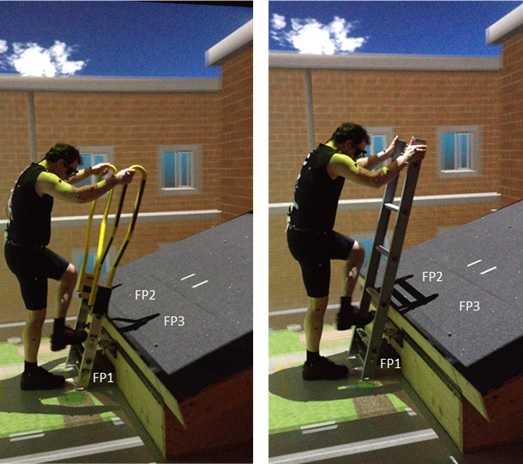NIOSH Research Rounds
NIOSH Research Rounds is a monthly bulletin of selected research at the National Institute for Occupational Safety and Health.
Volume 2, Number 9 (March 2017)
Study Finds Link Between Paid Sick Leave and Children’s Use of Healthcare Services
Many workers probably know that access to sick leave can help prevent the spread of flu and other illnesses at work. In fact, access to paid sick leave could go beyond workers and help improve their children’s use of healthcare services, as well, according to a new study at NIOSH.
Published in the American Journal of Industrial Medicine, the study found that children of parents with paid sick leave were more likely to receive annual flu shots, compared to children of parents without paid sick leave. Similarly, children of parents with paid sick leave were more likely to receive annual well-child checkups compared to children whose parents lacked paid sick leave.
In another finding, children of parents with paid sick leave were less likely than other children to receive delayed medical care. This finding could stem from the fact that paid sick leave makes it easier to take time off work, in order to take a sick child to a clinic or doctor. Delayed medical care could lead to illness that is more serious, longer hospital stays, and costlier treatments.
In addition, the study found that children whose parents had paid sick leave were less likely than other children to visit the emergency room. Because emergency-room visits are more expensive and less effective than regular doctor visits, this finding indicates that parents’ paid sick leave may not only help improve access to care for children but also—by reducing emergency-room visits—decrease the overall long-term societal burden of healthcare costs. Parents’ ability to balance their work and family lives through policies such as paid sick leave has the potential to improve their children’s health by helping them receive the healthcare services they need.
The study used 2011–2015 data from the National Health Interview Survey for more than 38,800 children under 18 years old. Conducted by the National Center for Health Statistics, this survey collects nationwide information on a wide range of health topics.
More information is available:
In This Issue
NIOSH Research Rounds is Brought to You By:
- John Howard, M.D., Director
- Fred Blosser, Editor in Chief
- Anne Blank, Story Editor
- Tanya Headley, Contributing Editor
- John Lechliter, Copy Editor
- Glenn Doyle, Technical Lead
- Tonya White, Technical Support
Get Email Updates
Subscribe to the NIOSH Research Rounds Newsletter, enter your email address:
Hearing Protection Improves after Earplug Testing
Hearing protection among oil-rig workers improved significantly after they underwent testing for properly fitting earplugs, according to a new study by NIOSH. The researchers reported the findings of their study in the International Journal of Audiology.
In the workplace, hearing loss related to loud noise is a persistent problem worldwide. In the United States alone, loud noise exposes an estimated 22 million workers to hearing loss annually, according to information from the National Health and Nutrition Examination Survey. Although hearing loss is irreversible, the good news is that it is also preventable. To prevent work-related hearing loss, NIOSH recommends that noise exposure over an 8-hour day be under 85 decibels A-weighted (dBA).
In 2012 and 2013, NIOSH researchers traveled to Louisiana and Texas to test hearing protection devices (HPD) among 126 volunteer study participants employed as oil-rig inspectors and engineers. These workers face significant work-related noise from the helicopters that bring them to and from the offshore worksite. To test the level of protection afforded by the workers’ earplugs, known as fit testing, they used the NIOSH-developed system HPD Well-Fit™. This simple system, which travels easily to field studies such as this one, involves having workers test their hearing with and without HPDs in their ears. The fit-test system measures the noise reduction provided by each worker’s own earplugs. Before the fit testing, less than half of participants had adequate reduction in the noises they might experience on the job. After the testing, more than 85% had adequate protection. Individual fit testing can identify when earplugs do not fit a worker’s ear canals and can help to train workers to effectively fit and wear earplugs.
For workers who want to measure the level of sound in their own workplace, NIOSH recently released a new Sound Level Meter app. Available on the NIOSH website, the Sound Level Meter app also provides information on noise-exposure limits and preventing work-related hearing loss from loud noise.
More information is available:
Modified “Walk-through” Ladder Tested in Virtual Reality Laboratory
This month is National Ladder Safety Month, but ladder safety is a year-round priority at NIOSH where scientists study how to prevent ladder-related falls. In a new study published in the journal Applied Ergonomics, a “walk-through” ladder was comparable in safety to regular ladders tested in the NIOSH Virtual Reality Laboratory in Morgantown, West Virginia.
If used improperly, ladders in the workplace can increase the risk of fall-related injuries and deaths. In 2010, 132 workers died in work-related falls from ladders, according to the Bureau of Labor Statistics. Most of these deaths occurred in construction. Walking from a ladder to a rooftop, or vice versa, at elevated heights can increase the risk of falling. To provide workers with something to grasp, walk-through ladders have extended handles on their tops, usually provided as ladder accessories. Although these ladder accessories are commercially available, the safety of walk-through ladders compared to regular ladders was unclear.
In this study, NIOSH scientists compared walk-through to regular extension ladders in the NIOSH Virtual Reality Laboratory, which uses computerized, surround-screen technology to mimic the experience of being at an elevated height. While study participants walked from the ladders to a simulated rooftop and back, the scientists measured participants’ body movements and the amount of force on the ladders and estimated the required friction at the ladder base. Both types of ladders had comparable measurements that indicated a low risk of sliding out and causing a fall when positioned at the proper 75.5-degree angle. While the walk-through ladder made it easier for participants to move from the ladder to the simulated roof, it did not ease the transition back to the ladder. Study participants included 16 experienced and 16 inexperienced male ladder users. The average age of the experienced group was 40 years, and the average age of the inexperienced group was 33 years.
For ladder safety, the scientists recommend placing ladders at the proper angle and tying them to a secure structure at the top and, if possible, the base. To help workers and other user’s position extension ladders correctly, NIOSH developed the award-winning Ladder Safety app. This app is available for free download from the Apple Store and Google Play.
More information is available:
Computer Model Predicts Temperature Rise Within Mobile Refuge Alternative in Coal Mines
Mine safety regulations in the United States require a protected and secure space—or mobile refuge alternative—in all underground coal mines. In the event of an explosion or other mining disaster that prevents miners from immediately escaping, refuge alternatives protect miners from exposure to carbon monoxide and other toxic gases by providing breathable air and a safe environment for 96 hours. We recently asked Lincan Yan, a scientist at NIOSH and lead author of a study in this area, about new results published in the Journal of Thermal Science and Engineering Applications. Working with an industry partner, Yan’s team tested the rate of temperature rise within a refuge alternative at the NIOSH Safety Research Coal Mine and Experimental Mine in Pittsburgh, Pennsylvania. This four-mile underground mine provides a controlled and safe environment for testing new safety and health interventions for coal miners.
Q: Why did you do this study?
A: Heat from the air-purifying equipment and the miners themselves can cause the air temperature and humidity within an occupied refuge alternative to rise to dangerous levels. Over the course of 96 hours, excessive temperature and humidity increases could lead to heat stress, or even death, among miners. Because of this serious risk, we wanted to measure the temperature and humidity in a test refuge alternative to see how much they increase over time. Ultimately, our goal was to develop a computer model to predict how temperature rises in mine refuge alternatives.
Q: How did you do the study?
A: To simulate a real-life situation, we calculated the amount of body heat generated by real miners. Using the NIOSH Safety Research Coal Mine and Experimental Mine, we then heated a tent-style refuge alternative that can hold as many as 10 people, but which, of course, was empty for the purposes of our study. Next, we measured temperature and humidity levels over 96 hours and then used these measurements to develop a computer model for predicting temperature rise.
Q: What did you find?
A: Our results showed that the average air temperature within the refuge alternative increased by 20.5°F over the course of 96 hours. At the same time, the relative humidity approached 90%. After validating these results, we were able to predict the refuge alternative’s average air temperature after 96 hours to within 1.1°F.
Q: What is the next step?
A: Based on our computer model, we could develop new models to predict the rise in body temperature that real miners would experience in a refuge alternative over time. Then, mining scientists could use these models to help set safety limits for air temperature and the number of occupants within refuge alternatives. Another area for additional research is temperature rise within refuge alternatives in different environments and the effects of mine dimensions and composition.
More information is available:
- Page last reviewed: March 14, 2017
- Page last updated: March 14, 2017
- Content source:
- National Institute for Occupational Safety and Health (NIOSH) Office of the Director


 ShareCompartir
ShareCompartir


